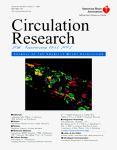|
Now, the tutorial video of our mouse vascular injury model (version 1 and 2 ) can be download !!! Click the right button of your mouse and save the file onto your computer. They could be viewed in QUICK TIME or Windows Media Player. Please feel free to copy the files for your colleagues. * Wire Injury Tutorial Video Version 1 ------ Higher Magnification (with narration) (You can learn how to insert the wire into the tiny artery.)
Sata Model The wire injury1.mpg
* Wire Injury Tutorial Video Version 2 ------ Lower Magnification (Silent). (You can learn how to control the femoral artery during the procedure.)
Sata Model The wire injury 2.mpg
Please install Rea Player Basic
(Free).
* I hear that some researchers experience problems in viewing the file due to some security guard in their institutes. If you E-mail to me, I am very happy to send you a free CD-ROM. M.S.
|
||
|
|
Published Articles in which this model has been used. By us 5. Absence of p53 Leads to Accelerated Neointimal Hyperplasia After Vascular Injury. 9. Potent inhibitory effect of sirolimus on circulating vascular progenitor cells. 10. Circulating progenitor cells contribute to neointimal formation in non-irradiated chimeric mice.
By others 2. Role of adiponectin in preventing vascular stenosis- the missing link of adipo-vascular axis - 6. Erythropoietin-mobilized endothelial progenitors enhance reendothelialization via Akt-endothelial nitric oxide synthase activation and prevent neointimal hyperplasia. 7. Tetrahydrobiopterin deficiency exaggerates intimal hyperplasia after vascular injury. 8. A role for muscle LIM protein (MLP) in vascular remodeling. 13. Dimethylarginine dimethylaminohydrolase promotes endothelial repair after vascular injury.
|
We are confident that all researchers can reproduce our results following the procedure described in the video. If you have question, please feel free to touch me.
I prefer to use COOK C-SF-15-15 (COOK INC. 1-812-339-2235). I usually cut the ends into 1 cm. You can use both ends. You can use both ends. If used gently, one piece can be re-used forever, in contrast to 2F Fogarty for rat carotid artery. It was about $9 when I was in United Sates. We also use clinical-grade guide wires.
I highly appreciate your interest in our model.
I look forward to hearing from you in future.
Masa Sata
